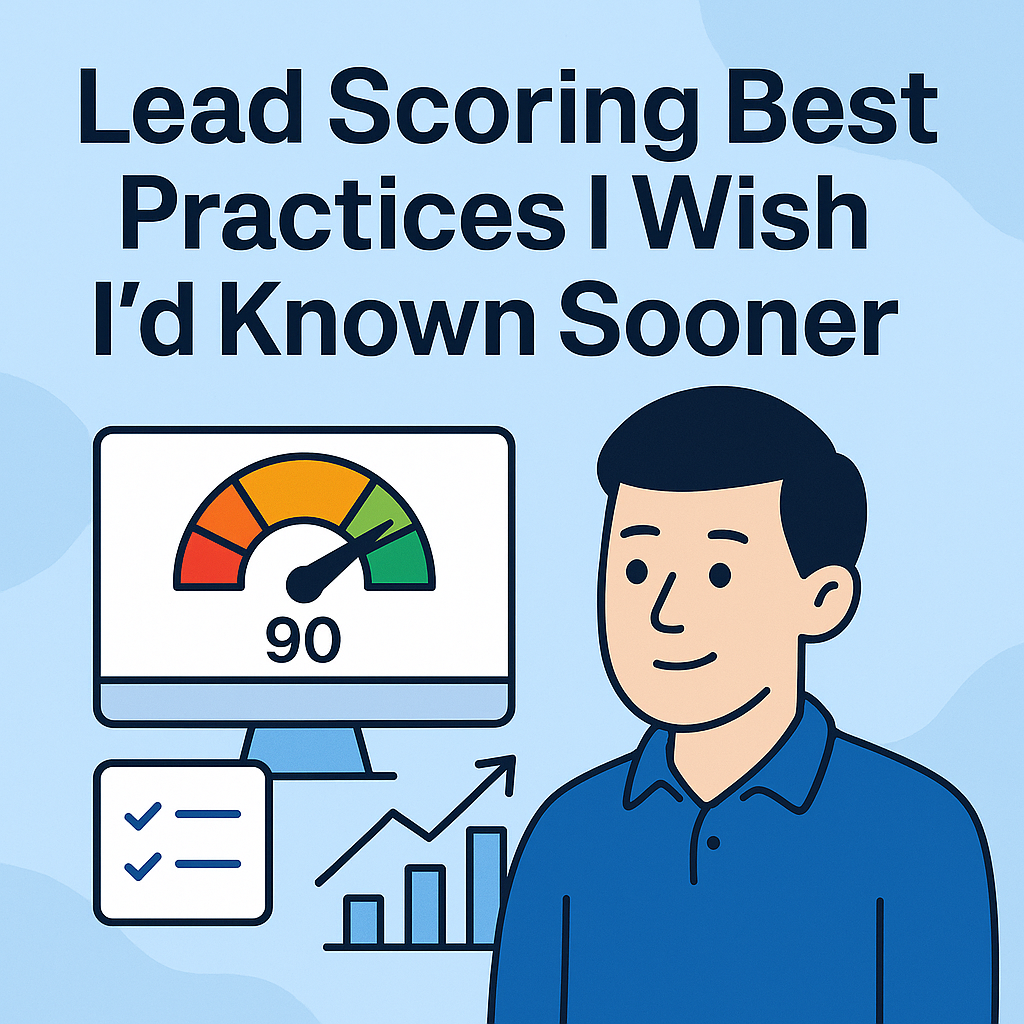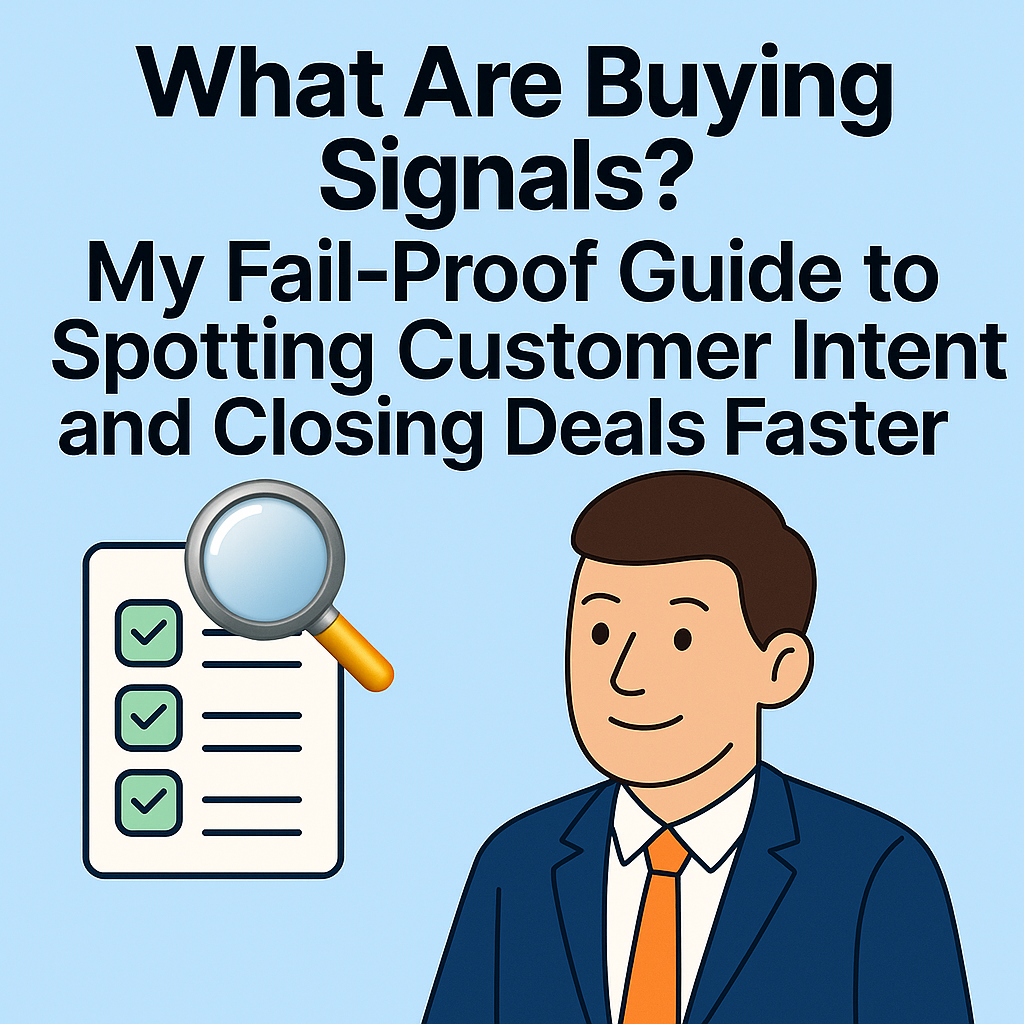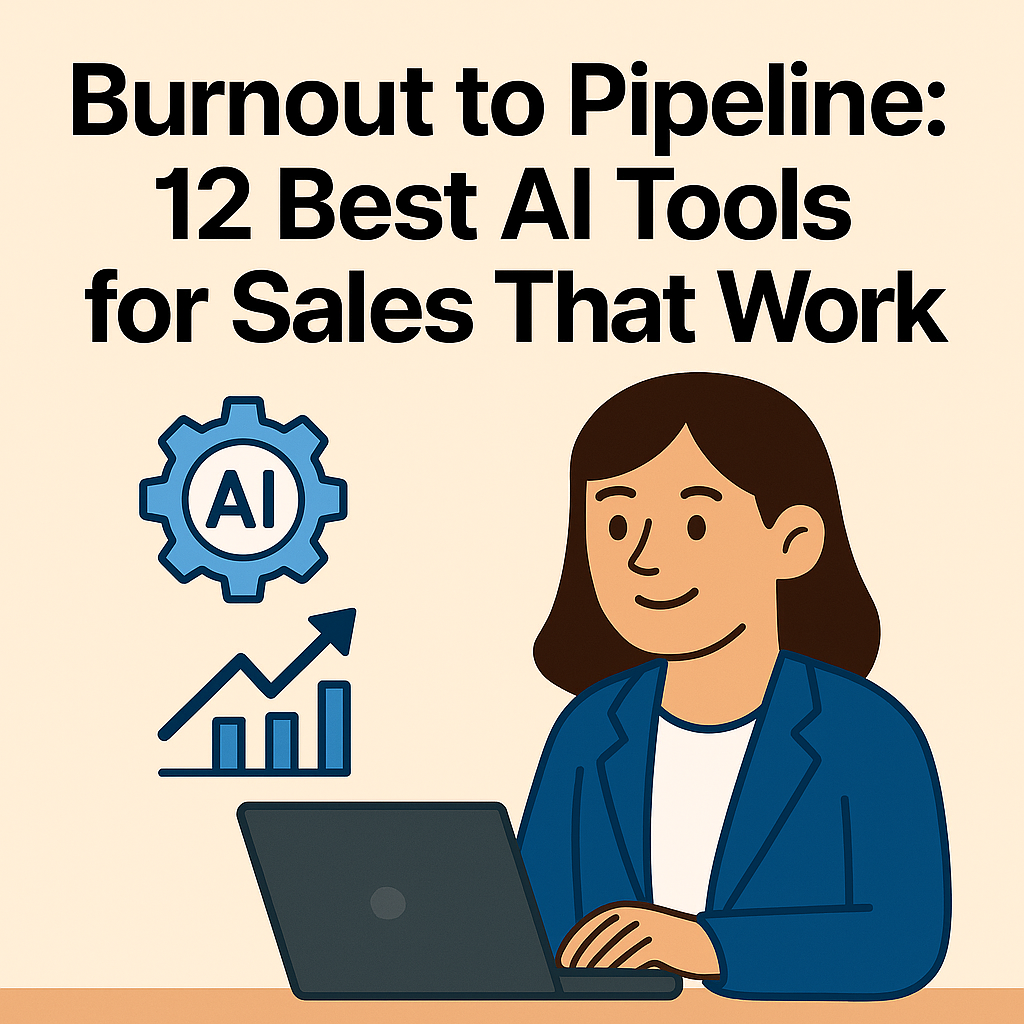My Journey from SDR Burnout to Building an AI Sales Machine
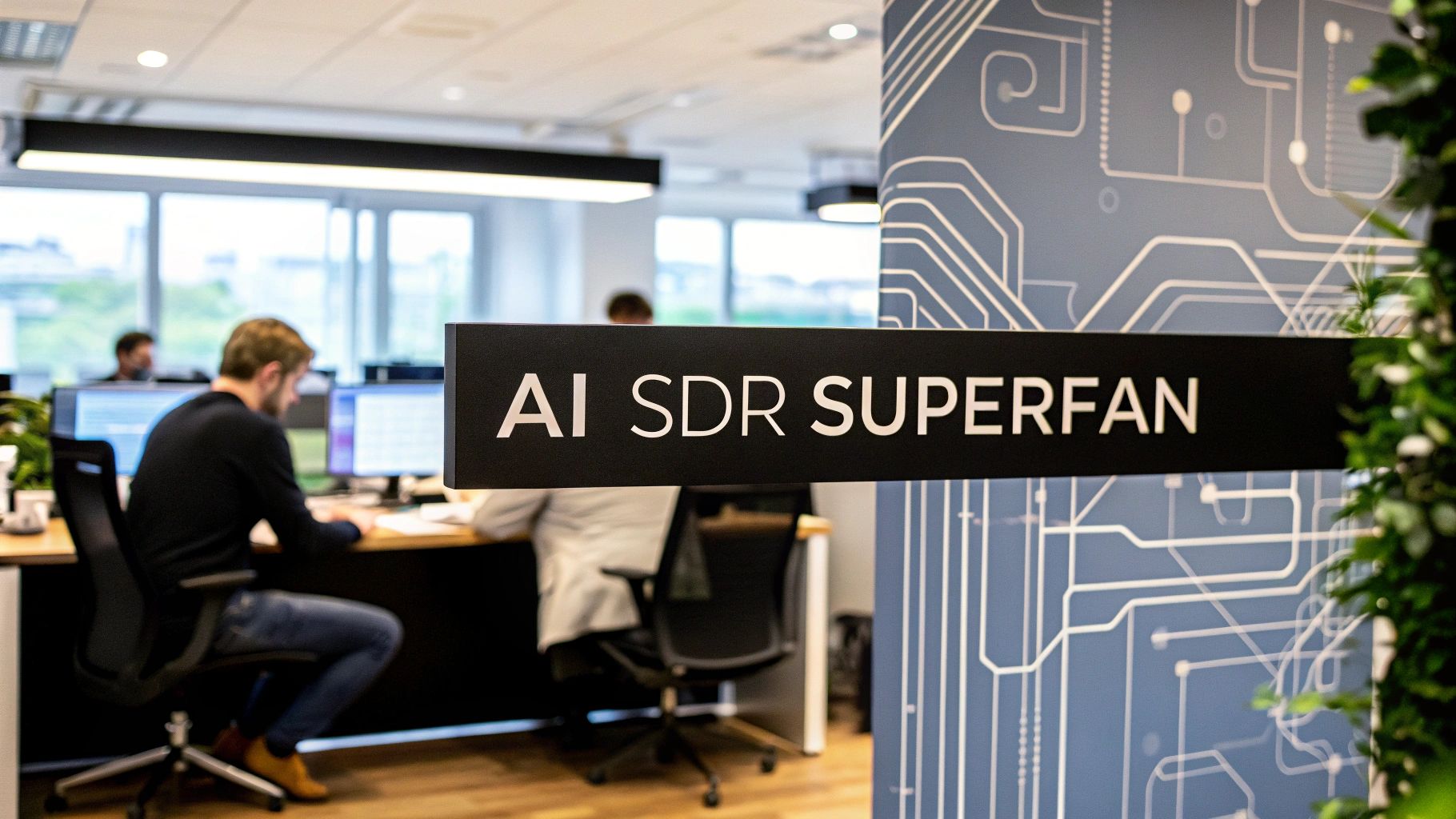
Let's get real for a second. For years, I was convinced my sales development team was a well-oiled machine. We were hitting our activity quotas, sending thousands of emails, and on paper, we looked busy. Productive, even. But when I stopped looking at vanity metrics and faced the cold, hard numbers, I realized my team wasn't a machine. They were drowning. And I was the one who built the system, holding them under.
My wake-up call came in the form of a simple question: What if I could give my team a digital partner? That’s when I discovered the game-changing power of an AI SDR, an autonomous software agent designed to take over the most repetitive, soul-crushing parts of sales prospecting. And let me tell you, it changed everything.
The Moment I Knew My SDR Team Was Broken
I'll never forget the day it all clicked. I was deep into our quarterly performance review, staring at charts. Activity was up, tons of calls, a mountain of emails. But our actual sales pipeline growth? Stubbornly flat. What was going on?

The brutal truth hit me when I shadowed my team. These talented, highly-paid representatives were spending over 60% of their day not selling. They were buried in manual, low-value work. We weren't a sales engine; we were a factory of busywork.
The Grind I Had Ignored
I watched my reps, and the reality was even worse than the data suggested. Their days were a painful, repeating loop of inefficiency:
- Manual Prospecting: Endless hours scrolling through LinkedIn Sales Navigator, trying to piece together lead lists that were often outdated by the time they hit "send." Sound familiar?
- Generic Outreach: Relying on the same tired email templates for every single prospect because there was simply no time for genuine, thoughtful personalization.
- Data Entry Drudgery: Mind-numbing copy-pasting of contact details between our CRM, spreadsheets, and sales tools. It was a recipe for errors and total frustration.
- Leads Falling Through the Cracks: With so much manual tracking, promising follow-ups were inevitably missed. Hot leads went cold while my team was busy updating records.
My "aha!" moment wasn't some flash of brilliance. It was the painful realization that I had built a system that rewarded activity over results, burning out my best people on tasks a machine could do better, faster, and without getting bored.
This wasn't just inefficient; it was costing us a fortune in missed opportunities and high employee turnover. We were stuck in the past, and I could see our competitors—the ones embracing smarter tools, starting to pull away.
The Search for a Better Way
I knew something had to change, and fast. Pushing the team to simply "work harder" wasn't the answer, they were already stretched to their absolute limit. This painful reality check is what kicked off my research into the world of the AI SDR.
The concept was simple yet powerful: What if I could give each of my reps a digital partner? An assistant that could handle all the grunt work, freeing them up to focus on what humans excel at, connecting with people, building relationships, and closing complex deals. That’s the fundamental promise of an AI SDR, and it was the solution I desperately needed.
Manual SDR vs AI SDR: A Quick Comparison
To understand the shift, let's compare the old way and the new way. I put together this table to show my team the "before and after" picture of their daily tasks. It made the value proposition crystal clear.
This comparison isn't just about efficiency; it's about re-humanizing the sales role. By offloading the robotic tasks to a robot, my team could finally focus on high-impact, strategic work.
What Exactly Is an AI SDR (and What It Is Not)?
Let's clear the air. When people hear "AI SDR," their minds often jump to a glorified chatbot or a simple email autoresponder. I get it, because when I first started digging into this, that's kind of what I imagined too. But the reality is far more sophisticated and, frankly, much more exciting.
An AI SDR isn't just one piece of software. Think of it as an autonomous system, a digital teammate that handles the entire top-of-funnel sales process, from finding the perfect prospect to booking the first meeting. It's not just a tool; it's a tireless, 24/7 sales development machine built from intelligent software agents working in perfect sync.
Your New Digital Sales Team
To wrap your head around it, imagine you could hire three distinct specialists for your team. That's essentially what a modern AI SDR system gives you:
- The Prospecting Brain: This is your master researcher. It constantly scans the web, sifting through social platforms, and diving into data sources to find prospects that are a perfect fit for your Ideal Customer Profile (ICP). Best of all? It never needs a coffee break and never gets tired of digging for gold.
- The Creative Writer: This agent takes the rich data found by the researcher and gets to work. It crafts incredibly personalized messages by analyzing a prospect's recent online activity, their job title, or recent company news. The goal is to write outreach that feels genuinely human and relevant...the complete opposite of a generic, blasted template.
- The Persistent Follow-up Specialist: We all know follow-up is where most deals are won or lost. This agent is relentless. It manages the entire outreach cadence across email and social media, sends perfectly timed follow-ups, tracks every bit of engagement, and knows exactly when to keep nurturing a lead or when it's time to book a meeting.
This visual breaks down how all these pieces fit together, turning a mountain of raw data into actual, meaningful outreach.
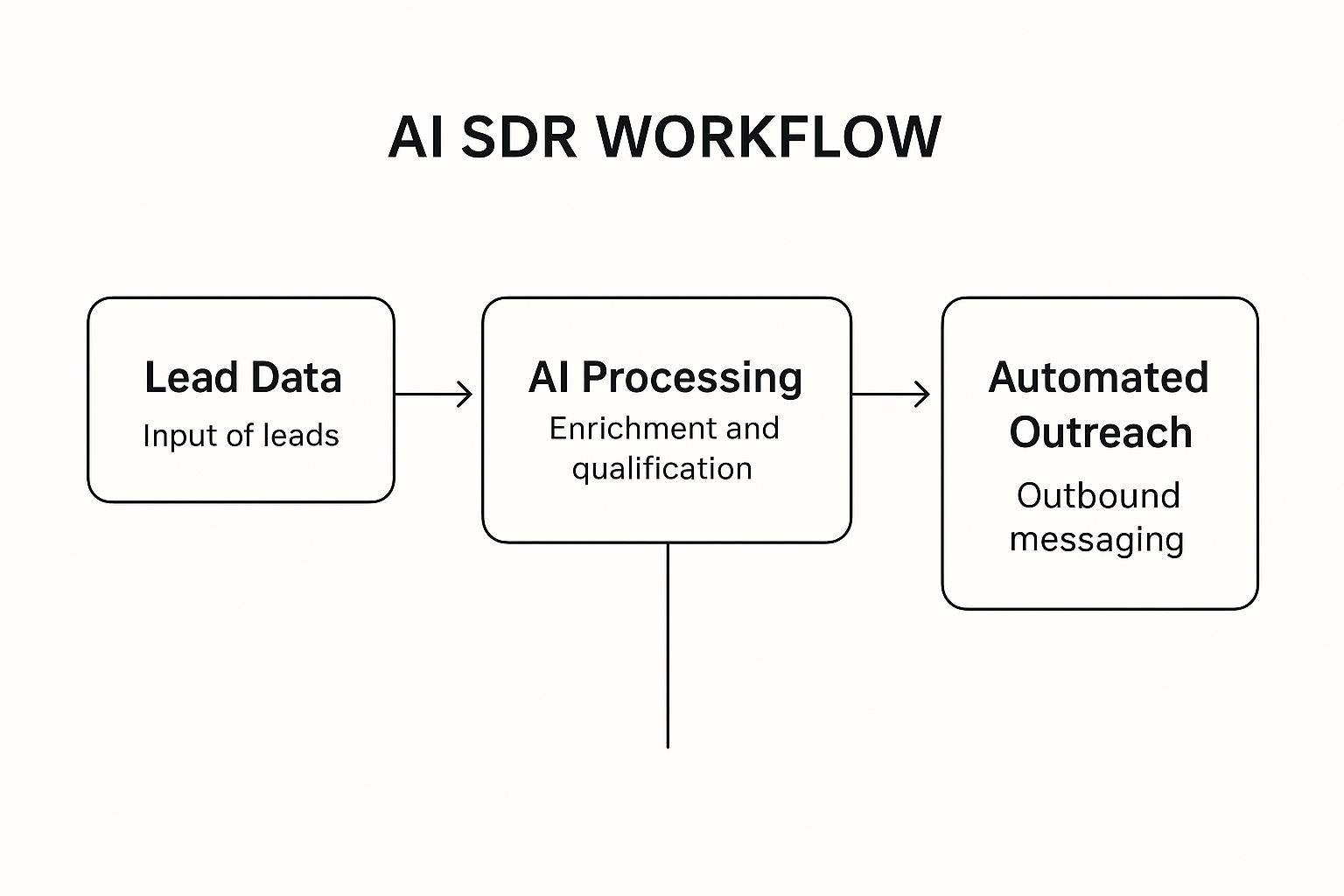
The workflow is beautifully simple yet incredibly powerful. The AI gathers lead data, enriches it for personalization, and then launches automated outreach sequences to begin real conversations.
What an AI SDR Is Not
This is a critical distinction, and it’s where I see most people go wrong.
An AI SDR is not a replacement for human connection. It’s a tool designed to amplify it. The biggest myth out there is that you can just "set it and forget it" and then fire your sales team.
Thinking of this technology as a human replacement is a fast track to failure. Its real job is to take on 80% of tedious, repetitive work that burns out human SDRs. This frees up your team to focus on the high-value 20% that truly requires empathy, strategic thinking, and relationship-building—like running brilliant discovery calls and closing complex deals.
It's all about augmenting your team, not automating them out of a job. For a better understanding of this, you can find some great context by exploring current AI technology and innovations. In a nutshell, the AI SDR qualifies; your human team closes.
The Multi-Agent AI SDR: A True Game Changer
This is where things get exciting. Early AI tools were helpful, but let's be honest, they were often just glorified spam cannons. The latest evolution, however, is a completely different beast: multi-agent AI SDR systems. This isn't just a small step; it's a monumental leap forward.
I remember my early days experimenting with single-agent AI. The results were… okay. It saved some time, but the outreach still felt a bit robotic and disconnected. The AI was performing a task, not executing a strategy. It was a tool, not a teammate.
Then I started working with multi-agent platforms, and everything fell into place.
A True Digital Sales Team
Imagine an entire team of specialized AIs working in perfect harmony. That’s the core concept. Instead of one AI trying to do everything, you have a collaborative system where each agent has a specific job.
- The Data Miner: Think of this agent as your obsessive researcher. It relentlessly digs through public data, social media, and internal documents to find accounts and contacts that perfectly match your Ideal Customer Profile (ICP).
- The Signal Analyst: This one is the detective. It focuses exclusively on buying signals, tracking job changes, monitoring competitor mentions, and identifying when a prospect engages with relevant content. It finds the why now.
- The Creative Copywriter: Fed with rich data from the other two agents, this AI crafts hyper-personalized outreach. It doesn't just insert [First_Name]; it references a recent podcast appearance or a new company funding announcement to create a message that demands attention.
- The Orchestrator: This is the project manager of the group. It takes all the inputs, decides the best channel for outreach (email, LinkedIn, etc.), and executes the sequence flawlessly.
This collaborative approach is what separates a simple tool from a true game-changer. It creates personalization and efficiency at a scale that is physically impossible for a human team to replicate. It's not just theory; it’s the future of sales happening right now.
This shift is precisely why the market is exploding. Projections indicate that the AI Sales Assistant Software market is moving to $67.36 billion by 2030. This isn't just about sending more emails; it's about making every single interaction smarter. Some multi-agent platforms are even reporting a sevenfold increase in conversion rates, which aligns with the massive performance jump I saw firsthand. You can explore more about the future of AI in sales strategies to see just how big this wave is getting.
The multi-agent AI SDR isn't just another tool in the toolbox. It’s a whole new toolbox.
How to Implement Your First AI SDR: A Step-by-Step Playbook
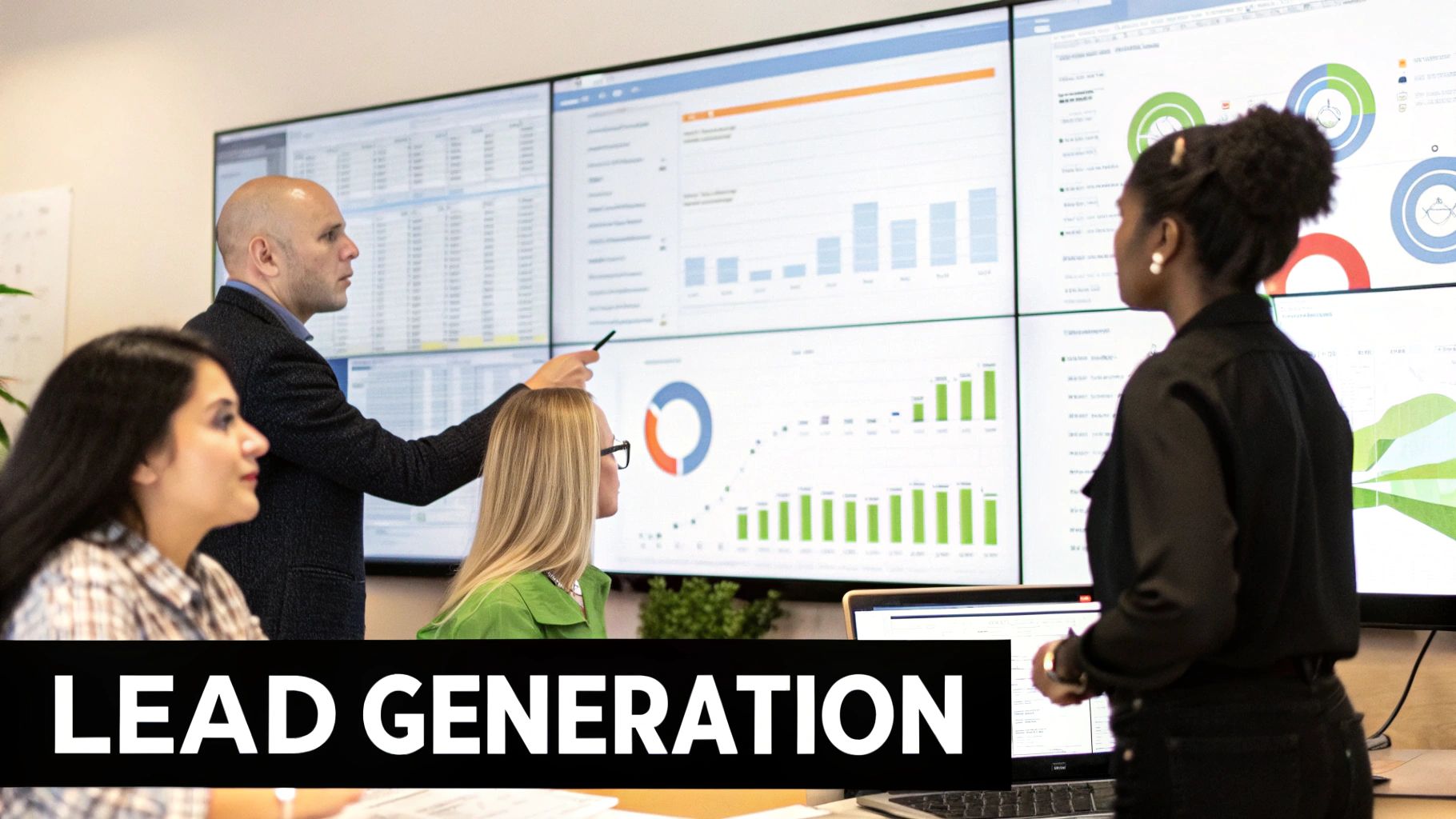
Alright, feeling a little overwhelmed by all the possibilities? Don't be. I've been exactly where you are, staring at a dozen different platforms and wondering where on earth to start. It’s easy to get lost in the hype.
This isn’t a theoretical lecture. This is a no-fluff, practical playbook based on my trial-and-error journey. I’ll walk you through getting your first AI SDR up and running without the headaches I had to endure. Let's build this together! 🛠️
Step 1: Define Your Ideal Customer Profile First
This is the most critical step, and it's where most people miss it. I made this mistake big time. I was so excited about the tech that I just wanted to "let it rip." The result? A lot of outreach to irrelevant people.
NEVER let your AI SDR run wild without a crystal-clear Ideal Customer Profile (ICP). Garbage in, garbage out isn’t just a saying; it’s a painful reality. Your AI is only as good as the instructions you give it.
Before you even look at platforms, get specific. Who are you selling to?
- Industry & Company Size: Are you targeting Series B tech startups or established manufacturing firms?
- Geography: Which countries or regions are your priority?
- Job Titles & Departments: Who is the decision-maker? Who is the economic buyer?
- Buying Signals: What tells you they need your help now? (e.g., hiring for specific roles, using a competitor's tech, recent funding).
Document this. Seriously, pen it down. This document will be your AI’s bible.
Step 2: Choose the Right Platform and Integrate Everything
Now that you know who you're targeting, it's time to pick your tool. Don't get dazzled by flashy features. Focus on the fundamentals.
What to do:
- Prioritize CRM Integration: Your AI SDR must sync flawlessly with your CRM (HubSpot or Salesforce). If it doesn't, you're just creating another data silo and more manual work. This is non-negotiable.
- Look for Multi-Channel Capability: The best AI SDRs can orchestrate outreach across both email and LinkedIn. Email alone is not enough anymore.
- Check Data Sources: Ask where their prospect data comes from. A good platform will have high-quality, verified data sources to find accurate contact information.
This last point is crucial. With cold email reply rates dropping by at least 50% recently, you need more than just an email address. Advanced AI SDR startups are addressing this by integrating data from dozens of providers and utilizing AI to find the most relevant leads with incredible precision. They can automate up to 90% of the sales development process, a huge leap in efficiency. You can get more insights on how AI startups are reshaping sales development and see why deep data integration matters.
Step 3: Launch Your First Campaign and Monitor It Closely
You’ve defined your ICP and chosen your tool. It’s go-time! But don’t just hit "launch" and walk away. Your first campaign is all about learning:
- Start Small: Don't upload your entire database. Begin with a focused segment of 100-200 prospects that perfectly match your ICP.
- Craft the Messaging: Utilize AI to build your outreach sequence. Give it the core value propositions and pain points from your ICP document. Let it generate the personalized variations.
- Review and Refine: For the first two weeks, check in daily. How are the open rates? Are the replies positive? The AI will learn from this feedback, but it needs your initial guidance to know what "good" looks like.
By following this step-by-step process, you're not just flipping a switch; you're strategically deploying a powerful new team member. You're building a system for predictable pipeline growth, freeing your Human team to do what they do best: close deals. Ready to take the next step?
Common Mistakes to Avoid (I Made Them So You Don't Have To)
Let's talk about the ugly side of bringing an AI SDR on board : the mistakes. When I first dove in, I was so enamored with the potential wins that I managed to step on every single landmine. See me as your willing crash-test dummy. My goal here is brutally simple: to lay out my face-palm moments so you can sidestep them completely.
Trust me on this one: avoiding these blunders is as critical as following the best practices. Let's get into the "what NOT to do" guide I wish I'd had from the start.
The "Garbage In, Garbage Out" Trap
My biggest rookie mistake? I was so eager to see the AI work its magic that I fed it a messy, undefined prospect list. I essentially threw my entire CRM at it and crossed my fingers for gold. What I got back was a masterclass in how an AI can send beautifully personalized, yet completely irrelevant, messages to all the wrong people.
It was a textbook case of "garbage in, garbage out." Your AI SDR is a powerful engine and utilizes clean fuel to run. If your Ideal Customer Profile (ICP) is fuzzy, your AI will happily chase ghosts for you. It'll burn through your budget and, worse, potentially tarnish your brand by bothering people who have no interest in what you sell.
What to NEVER do: Don't even think about launching an AI SDR campaign without a crystal-clear, hyper-specific ICP. "Tech companies" isn't good enough. You need to get granular: "Series B SaaS companies in North America with 50-200 employees that are currently posting job openings for sales roles."
The "Set It and Forget It" Fantasy
I also fell headfirst into the fantasy that an AI SDR is a "set it and forget it" machine. I launched my first campaign, gave myself a pat on the back, and then didn't check on it for a week. Huge mistake. When I finally peeked, the AI was relentlessly pursuing a conversation that had soured. It came off as clueless and robotic, undoing any goodwill it had built.
Your AI needs a human co-pilot, especially at the start. It uses your feedback to learn what a good interaction looks like and, just as importantly, when it's time to back off.
An unmonitored AI SDR isn't an autonomous teammate; it's a potential spam cannon waiting to go off. You risk annoying prospects to the point where they don't just ignore you, they block you. And trust me, getting your domain blacklisted is a headache you don't want.
What to do: Keep a close eye on your daily initial campaigns. Read the conversations, refine the messaging, and actively guide the AI.. This initial training is what transforms a generic bot into a smart, effective extension of your sales team. This human oversight is also a cornerstone of B2B social selling; you can't just automate and walk away. For more on this, check out our guide on how to turn social media into a sales machine.
Ignoring Your Human Team
My final blunder was forgetting about the most important piece of the puzzle: my human team. I rolled out the AI SDR as just another "tool" without explaining how it would make their jobs better. This immediately sparked fear and confusion. Was this robot here to take their jobs?
The truth is, an AI SDR is there to elevate your team, not replace them. It’s designed to handle the soul-crushing grind of prospecting so your reps can focus on what they do best: building relationships and closing deals.
You have to frame it as an upgrade for them. It’s a tool that gives them superpowers, not a pink slip. Train your representatives to work with the AI, teaching them how to manage its campaigns and utilize the warm conversations it generates. When they see it as their lead-gen assistant, everything changes.
The Future Is Agentic AI and Your Team Needs to Be Ready
If you think the AI tools we've covered so far are game-changers, hold on. The next wave is already hitting the shore, and it’s called agentic AI. This is a huge leap forward. We're not just talking about an AI assistant that follows a script you give it. We're talking about an AI that can think for itself, one that strategizes, plans, and learns on its own.
Think of it as the difference between a digital assistant and a digital strategist.
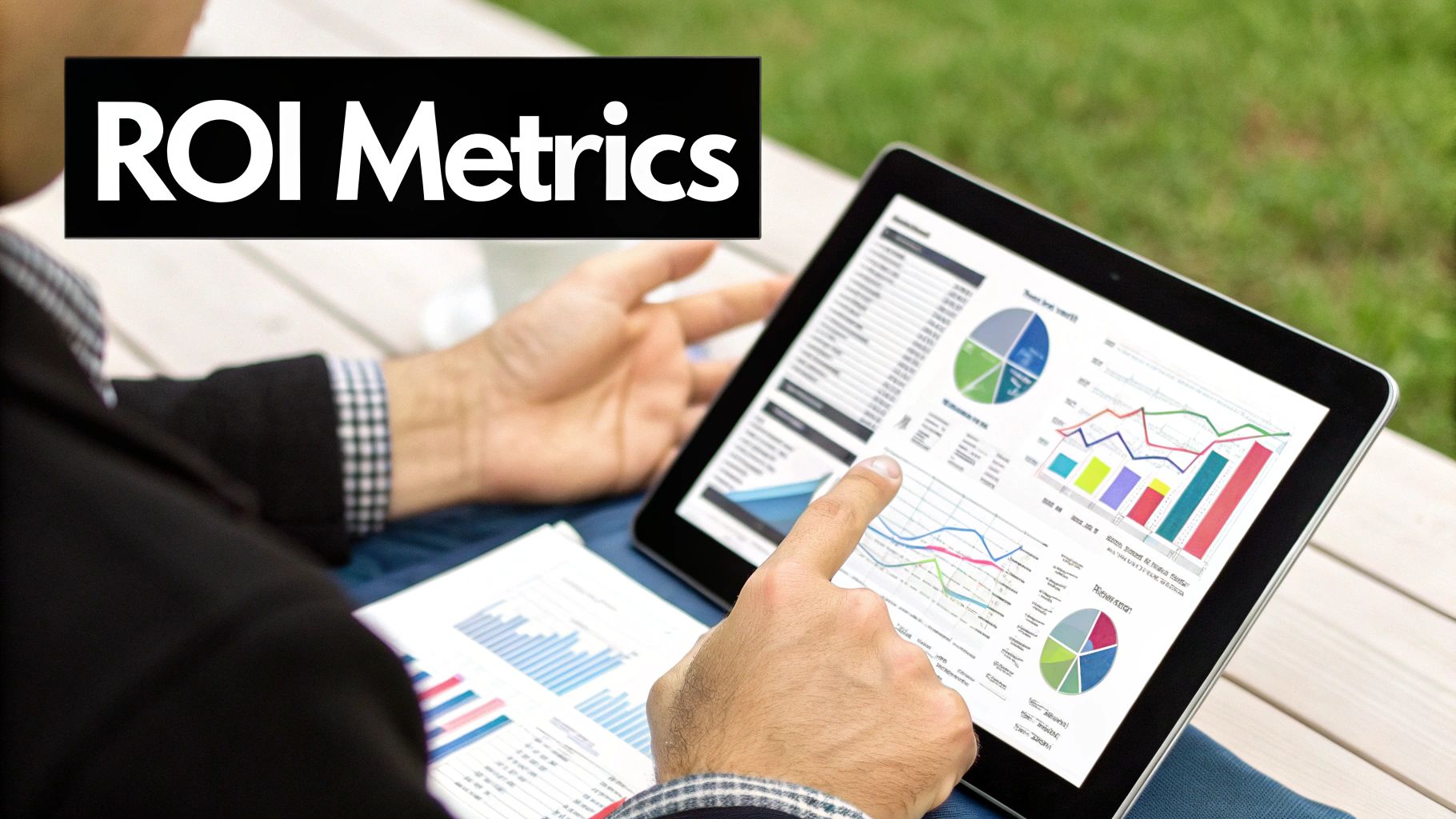
This isn’t some distant, sci-fi idea. I’ve been working with early versions of these agentic systems, and honestly, the potential is mind-boggling. Instead of feeding the AI a list of contacts, you give it a high-level goal. For example, "Book meetings with VPs of Marketing at fintech companies that just raised a Series B."
The agentic AI then figures out the entire process on its own. It determines how to find those people, what buying signals to watch for, the best way to craft the message, and the right follow-up cadence. It builds the whole playbook from a single objective.
Is your sales floor ready for that?
Preparing for the Agentic Shift
This change is coming, and it's coming fast. Agentic AI is already starting to redefine outbound sales by deploying entire teams of AI agents that work together, much like a human SDR team. You might have one AI focused on prospecting, another on crafting personalized messages, and a third handling the follow-up sequences. It's a fully autonomous sales engine.
Right now, only about 10% of companies utilize AI agents. But get this: over 50% plan to bring them on board within the next year. You can dig deeper into how multi-agent systems are becoming the AI SDR dream team to see just how great a competitive advantage this is.
So, what does this mean for your team? It's not about turning everyone into a coder. It’s about shifting their skills from "doing" to "directing."
- Strategic Oversight: Your human SDRs will evolve into AI managers. Their primary role will be to set the AI's strategic direction, monitor its performance, and adjust its goals to keep it on track. They’ll be the conductors of an AI orchestra.
- Creative Campaign Design: With AI handling the execution, your reps can focus on the bigger picture. They’ll be responsible for designing the high-level campaigns and unique value propositions that make you stand out.
- High-Stakes Human Connection: The AI will handle the first 90% of the outreach, warming up leads and qualifying them. This frees up your team to become absolute masters of the final, critical conversations that close complex deals.
This isn't a moment to be afraid of replacement; it's a massive opportunity to elevate your team. The companies that embrace agentic AI first won't just be a little more efficient, they'll be playing a completely different game than their competitors. The future of sales is being written as we speak.
The question you need to ask yourself is simple: Are you going to be the one leading the change, or will you be left scrambling to catch up? Your window to get ahead of this curve is right now.
It's Time to Evolve or Get Left Behind
We’ve covered a lot of ground, from my painful realization about my broken SDR process to the step-by-step playbook for launching your first AI SDR. We’ve looked at the rookie mistakes to avoid (trust me on those!) and peeked into the agentic future that’s already here.
The key takeaway is this: An AI SDR isn't just another shiny new tool. It's a fundamental shift in how sales teams operate. It’s the difference between manual labor and strategic execution. By taking the repetitive, soul-crushing tasks off your team's plate, you empower them to do what they were hired to do: build relationships and close deals. You transform them from factory workers into elite sales strategists.
The choice is yours. You can continue grinding it out the old way, burning out your team on low-value tasks while your competitors build a predictable, scalable sales engine. Otherwise, you can embrace the change, give your team the superpower of AI, and start playing a whole new game.
Ready to see what your sales team is truly capable of?
FAQ
H3: Will an AI SDR replace my human sales team?
No, and this is the biggest myth out there. The real goal of an AI SDR is to augment your team, not replace them. I made sure my team understood this from day one. The AI handles the draining, repetitive work such as prospecting, data entry, initial outreach—so your human reps can focus on high-value activities that require a human touch.
Think of it this way: The AI sets the stage, and your star players come in to close the show. It’s all about freeing them up for relationship building, navigating complex objections, and running brilliant discovery calls. It gives them superpowers, not a pink slip.
H3: How much does an AI SDR typically cost?
The price tag can change quickly. It depends on the platform power, leads you’re contacting, and the customization you need. Some tools start at a few hundred dollars per month, while advanced, multi-agent platforms are a bigger investment.
Here's my advice: Don't just look at the cost; calculate the ROI. Compare it to an SDR's salary (plus benefits and overhead). An AI SDR will work 24/7 without getting tired and can contact thousands of prospects. Often, the flood of new, qualified meetings makes it a massive financial win.
H3: How long until I see results from an AI SDR?
Patience is key here. While you can get an AI SDR running in days, don't expect a tidal wave of meetings overnight. There’s an initial learning phase of about 2-4 weeks for the AI to calibrate its approach.
You should see the first meetings booked within a month. However, the real, predictable pipeline growth becomes clear after 60-90 days, once the system has fully optimized its outreach. You can find more information on our AI SDR page for more clarity.
Ready to stop wasting time on manual prospecting and start filling your calendar with warm leads? GojiberryAI identifies prospects showing real buying intent and delivers them straight to you, enriched and ready for conversation. Book a demo today and see it in action!
More High-Intent Leads = Your New Growth Engine.
Start Now and Get New High Intent Leads DeliveredStraight to Slack or Your Inbox.







